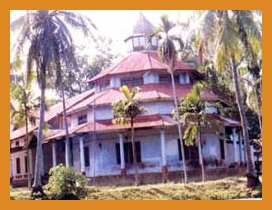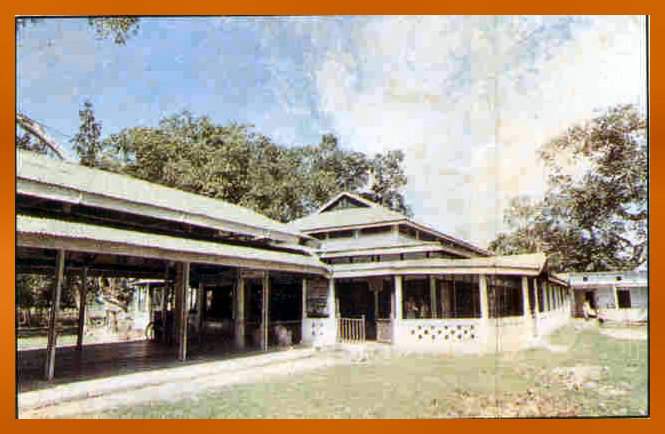Bardowa—Where the Saint was Born

In his literary compositions, Sankaradeva mentions Bardowa (Baradowā) as being the place of his birth. In the nineteenth chapter of his Uttarakanda Ramayana, for instance, the Saint gives an account of his roots:
Baradowā nāme grāma sasye matsye anupāma Louhityara āti anukula bhoilā sei Grameswara yāra nāma Rājadhara Kāyastha kulara padmaphula tāna putra Suryyavara mahābara desadhara dāni māni mahāyasi sista yāra yasa ebhu jwalai Jayanta Mādhava dalai duyo bhāi yāhāra kanistha tāna hante bhoilā jāta samaste desate khyāta prasiddha Kusuma yāra nāma dāne māne bhoilā chara bhaumika madhyata sāra ekogune nāhike upāma tāhāna santati āti jnāna-sunya sisumati Kesavara kinkara Sankara Dirgha hrasva nānā chande biracilā padabandhe Seskathā Uttarakāndara
There stands a village, Baradowā by name, unparalleled in richness of crops and fishes, washed by the waters of the Lauhitya. A potentate named Rājadhara ruled there, the lotus of the Kāyastha clan. His son was Suryyavara, owner of lands, generous, highly honored, most renowned and gentle, whose fame still shines, having as his brothers, Jayanta and Mādhava Dalai. From him was born the renowned Kusumavara known throughout the length and breadth of the country, who excelled in bounty and honor, the chief among the bhaumikas (landed-chiefs). Each of his virtues is matchless. His son, Sankara, quite lacking in wisdom and knowledge and utterly childish, the servant of Keśava, composed the final events of the Uttarakānda in verse, in multifarious long and short rhymes.

 Bardowa (also referred to as Baṭadravā) is situated 18 Km north-west of the Nagaon town of Assam. In medieval times, Bardowa was also known as Ṭembuyānī (Ṭemonīyā). Today, the Sattra (monastery) at Bardowa is a major religious centre for the Vaisnava devotees and also a major attraction for the tourists visiting Assam.
Bardowa (also referred to as Baṭadravā) is situated 18 Km north-west of the Nagaon town of Assam. In medieval times, Bardowa was also known as Ṭembuyānī (Ṭemonīyā). Today, the Sattra (monastery) at Bardowa is a major religious centre for the Vaisnava devotees and also a major attraction for the tourists visiting Assam.
 The Bardowa Sattra actually consists of two Sattras:
The Bardowa Sattra actually consists of two Sattras:
- Narovā Sattra a museum show-casing some fine specimens of Sattriya wood-art (rare wooden sculptures, wood-carvings of medieval times) is also located in this Sattra.
- Śalaguri Sattra in which is preserved the padaśilā (foot-print) of the Guru.